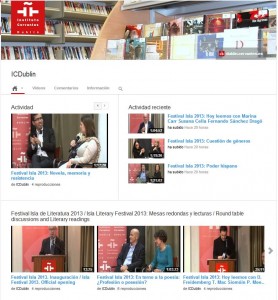Blog del Instituto Cervantes de Dublín
Torre Martello
El idioma viaja por el viento / Language Travels through the Wind
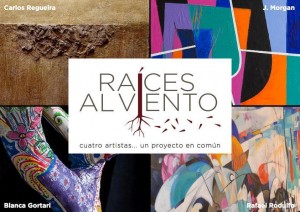 Cuatro artistas y cuatro interpretaciones visuales del idioma español con toda su diversidad. Raíces al viento es el resultado de la colaboración de Carlos Regueira, Blanca Gortari, Jorge Morgan y Rafael Rodulfo. Estos artistas nos ofrecen su visión personal del idioma como una semilla que nace en tierra yerma y a la que el viento agita, impulsa y lleva a renacer al otro lado del océano. Las texturas y el vibrante arte de Carlos Regueira nos recuerdan la importancia de mantener viva una lengua.
Cuatro artistas y cuatro interpretaciones visuales del idioma español con toda su diversidad. Raíces al viento es el resultado de la colaboración de Carlos Regueira, Blanca Gortari, Jorge Morgan y Rafael Rodulfo. Estos artistas nos ofrecen su visión personal del idioma como una semilla que nace en tierra yerma y a la que el viento agita, impulsa y lleva a renacer al otro lado del océano. Las texturas y el vibrante arte de Carlos Regueira nos recuerdan la importancia de mantener viva una lengua.
Blanca Gortari aporta poesía y nitidez de pensamiento a esta colección y dota su trabajo de nuevas dimensiones al ir más allá de los medios convencionales y explorar emociones a través de nuevos formatos.
La tipografía es inherente al idioma y al utilizar algunos de estos elementos, Jorge Morgan construye el flujo de sus palabras a través de sus obras. Rafael Rodulfo añade el componente musical a esta exposición con su descubrimiento de ritmos cubanos plasmados en óleos sobre lienzo o madera. Para ello utiliza una escala cromática que armoniza a modo de notas musicales en un pentagrama.
Raíces al viento celebra la dimensión viva de un idioma y su representación por medio de las artes plásticas.
Texto: Miriam Abuin.
Traducción al español: Enca González Cambil
Información adicional: Miriam Abuin (prendub@cervantes.es)
Four artists and four visual interpretations of the Spanish language in all its diversity. Roots in the Wind is the collaboration by Carlos Regueira, Blanca Gortari, Jorge Morgan and Rafael Rodulfo to display their understanding of a language as “a seed born in a wasteland, risen and blown by the wind to be reborn across the ocean”. Carlos Regueira´s textures and vibrant art will remind us how important it is to keep a language alive and vibrant.
Blanca Gortari brings poetry and clarity of thought to this collection, going beyond the conventional mediums and exploring emotions through new formats, providing original dimensions to her work.
Typography is inherent to a language, and by using some of these elements Jorge Morgan constructs the flow of his words through his paintings. Rafael Rodulfo adds the musical component to this exhibition with his discovering of Cuban rhythms that he transposes into oil on canvas and wood, using a chromatic scale which harmonises as notes in a music sheet.
Roots in the Wind celebrates the living dimension of a language and its representation through visual arts.
Press release: Miriam Abuin
Translation into Spanish: Enca González Cambil
For more information please contact: Miriam Abuin (prendub@cervantes.es)
Común / Common. Daniel Rodríguez Castro
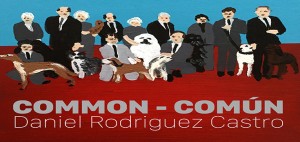 ¿Somos individuos sin el colectivo?
¿Somos individuos sin el colectivo?
Estructuras, organizaciones, masa: eso es una sociedad. Somos pequeñas partes de un todo que a menudo olvida nuestras particularidades para funcionar. Esta es la historia que cuentan las pinturas de Daniel Rodríguez Castro que podéis ver en el instituto Cervantes : empleados del mes, modelos corporativos con rostros desdibujados, parkings repletos de coches, «fotos» de grupo al lienzo (doctores, equipos deportivos, bandas de música…), vistas aéreas de parques llenos de gente, el mar con bañistas, una calle a rebosar de viandantes…
Reconocerse y reconocernos.
La colección de cuarenta obras, producidas entre 2004 y 2006, se compone en su mayoría de retratos frontales e imágenes aéreas, por las que el artista empezó a interesarse al volar por primera vez. Dice Daniel que fue en su primer vuelo, de Barcelona a Londres, cuando comenzó a fijarse en los pequeños detalles del mundo visto desde lo alto.
Clases, carreteras, edificios, aparcamientos, parques: somos muchos, somos uno.
El tema de Común, según el artista, es la identidad y el comportamiento de individuo en grupo. En efecto, a pesar de retratar multitudes consigue analizar particularidades, pequeños detalles: el modo de aparcar de un coche en un aparcamiento, la mirada más distraída de uno de los empleados del mes, la pose poder relajada de un modelo corporativo, etc.
En una pequeña visita guiada a la exposición en la que Daniel nos explicó su obra el 23 de abril, día del libro, nos comentaba, hablando de su técnica, que él trata de desvincularse cuanto puede de sus creaciones, que estas son rápidas y que disfruta más del proceso de búsqueda, de la foto perfecta que va a convertirse después en pintura (porque todas sus pinturas de grupo toman como modelo fotos originales).
En sus colecciones más recientes: Modelos corporativos y El concurso, de 2014, apreciamos rostros aún más desdibujados que en el resto de los cuadros: más que caras, nos enfrentamos a máscaras, figurantes, actores en busca de una «felicidad fotográfica».
Sin llegar a lo distópico, quizá por el empleo de colores vivos, joviales, esta exposición nos retrata como sociedad y como pequeños colectivos, llamando la atención sobre el poder de la masa, la influencia del grupo y la normalidad de actuar en conjunto, dejándonos llevar e influenciándonos mutuamente.
La pequeña reflexión que saco de esta original exposición es que el colectivo también nos hace grandes, y que es en sociedad donde nuestras voces cobran importancia. En cambio, también creo que deberíamos saber ser colectivo en todas las situaciones. Si sonreímos en fotos de familia, de equipo, en orlas; si somos un teatro lleno de espectadores y una cola gigante en la montaña rusa de un parque de atracciones; si llenamos las tiendas rastreando gangas en rebajas; si somos la ola en un partido de fútbol, también deberíamos ser esa patera con 700 inmigrantes que naufragó apenas hace una semana en las costas de Libia. Eso también era un grupo, pero sin colores, ni sonrisas, ni poder, ni esperanza; un colectivo que luchaba por encontrar una vida digna; un colectivo de individuos sin voz, apenas rostro, sin derechos.
Si queréis sacar vuestras propias reflexiones no podéis perderos Común, de Daniel Rodríguez Castro, en la sala de exposiciones de Instituto Cervantes.
Texto: Ángela Arambarri Ateca
Traducción al inglés: Enca González Cambil
Are we individuals without the collective?
Sturctures, organisations, mass: that is society. We are small parts of a whole that often forgets our individualities. This is the story told by Daniel Rodríguez Castro´s paintings at Instituto Cervantes: employees of the month, corporate models with blurred faces, car parks packed with cars, group photos (doctors, sports teams, music bands…), aerial views of parks full of people, the sea with swimmers, a street bursting with pedestrians…
Recognise oneself and recognise ourselves.
This collection is made up of 20 pieces produced between 2004 and 2006. Most of them are portraits and aerial views that the artist became interested in when he flew for the first time. It was during his first flight from Barcelona to London when he noticed the little details of the world as seen from above.
Classes, roads, buildings and car parks, parks: we are many, we are one.
The theme of ‘Common’, according to the artist, is identity and the individual’s behaviour within a group.
During his exhibition tour on the 23rd April, World Book Day, Daniel explained that he tries to distance himself from his creations. They are completed within a short timeframe but he enjoys the research process most, the perfect photo that will become a painting, since all his group paintings are modelled on original photos.
In his most recent collections: ‘Corporate models’ and ‘The Contest’ (2014), we can see faces that are more blurred than in the rest of his paintings: rather than faces we see masks, figurines, actors in search of ‘photographic bliss’.
This exhibition does not present a dystopian society, perhaps due to the use of vibrant and joyful colours. It portrays us as a society and as small collectives, drawing attention to mass power, group influence, the normality of acting as a group, letting us be led and mutually influencing each other.
My reflection of this original exhibition is that collectiveness also makes us big and that it is within a society that our voices become important. However, I also believe that we should know how to become a collective in all situations. If we smile in group, team or college photos, if we are a theatre full of spectators and a huge queue on the roller coaster, if we fill up shops searching for sales, if we are a wave at a soccer match, we should also become that boat with 700 migrants that sunk just over a week ago on the Libyan coast. This was a group as well, but a group without colours, without smiles, without power, without hope, a collective who fought for a decent life, a collective without voice, almost without a face, without rights.
If you wish to draw your own conclusions, don´t miss ‘Common´by Daniel Rodríguez Castro at Instituto Cervantes Dublin Exhibition room.
Text by: Ángela Arambarri Ateca
Translated by: Enca González Cambil
Daniel Rodríguez Castro en el Instituto Cervantes de Dublín / Daniel Rodriguez Castro’s Common Exhibition at Instituto Cervantes
 Puede ser que te reconozcas a ti mismo en esa foto de tu clase que compartiste en un ataque de nostalgia en Facebook, o quizás hayas logrado distanciarte de ese y de muchos otros grupos que vinieron después y comportarte, e incluso parecer una persona diferente al estar integrado en un ente colectivo: en el trabajo, en una reunión familiar.
Puede ser que te reconozcas a ti mismo en esa foto de tu clase que compartiste en un ataque de nostalgia en Facebook, o quizás hayas logrado distanciarte de ese y de muchos otros grupos que vinieron después y comportarte, e incluso parecer una persona diferente al estar integrado en un ente colectivo: en el trabajo, en una reunión familiar.
Quizás formar parte de la muchedumbre sea algo natural, parte de nuestra propia identidad, pero también es algo incómodo darse cuenta de que en algunos momentos hemos cambiado nuestra forma de ser para sentir que encajamos, que nos convertimos en camaleones para pasar desapercibidos en un ambiente concreto.
Daniel Rodríguez Castro (San Sebastián, 1984) explora el concepto de identidad del individuo, juega con él, sirviéndose del sentido del humor para realizar su análisis y representar grupos humanos en un abanico de situaciones. La estética aparentemente simple de Rodríguez Castro le da fuerza al mensaje; parece que nos desdibujemos en medio de la masa. Nuestra personalidad se convierte en una representación esquemática que desaparece entre el resto de seres humanos.
Después de completar su residencia artística en la Royal Hibernian Academy de Dublín en 2014, el artista nos mostrará una colección de su trabajo en el Instituto Cervantes, en la cual tendrás la oportunidad de apreciar la calidad de su trabajo y, posiblemente, autoexaminarte para confirmar o desechar la idea de si sobresales entre la multitud.
¿Dónde? Instituto Cervantes, Lincoln House, Lincoln Place, Dublin 2
¿Cuándo? 10 de abril al 30 de mayo
Horario de visitas: de lunes a jueves, de las 9.30 a las 19 horas; viernes y sábado, de 9.30 a 13.30
Inauguración el 9 de abril a las 6 de la tarde (disfruta de una copa de vino durante la inauguración).
Entrada gratuita
Texto: Miriam Abuin.
Daniel Rodriguez Castro’s Common Exhibition at Instituto Cervantes
Location: Instituto Cervantes, Lincoln House, Lincoln Place, Dublin 2
Date: 10th April to 30th May
Visiting times: Monday to Thursday, from 9.30am to 7pm; Friday and Saturday, from 9.30am to 1.30pm
Exhibition opens on 9th April at 6pm (complementary glass of Spanish wine at arrival).
Free Admission
Whether you are able to recognise your own self in that class picture you shared in a fit of nostalgia on Facebook, or you have managed to distance yourself from that group and many others that came after.
Behaving or even looking like a different person when being part of a collective: at the workplace at a family reunion or even as part of a big crowd it´s natural and part of one’s identity. But it’s also awkward to realise in some moments we have switched to an alternative ‘mode’ to belong, becoming chameleons to blend in in a particular environment.
Daniel Rodriguez Castro (San Sebastian, Spain, 1984) explores the concept of individual identity, plays with it, applying a sense of humour to his analysis and representing groups of people in a variety of situations. Rodriguez Castro’s apparently simple aesthetic strengthens the message; we seem blurry within the mass. Our personality becomes a schematic representation that disappears among other human beings.
After his residency at the Royal Hibernian Academy of Dublin in 2014, the artist will show a collection of his work at Instituto Cervantes Dublin, where you will be able to appreciate his paintings and possibly re-examine yourself to confirm or deny if you stand out from the crowd.
Press release by:
Miriam Abuin
Contact: 01 6311500/087 9437 506
E-mail: prendub@cervantes.es
Lincoln House • Lincoln Place • Dublin 2 •Ireland
Tel: + 353 631 1500 • Fax: + 353 1 631 1599 • Email: prendub@cervantes.es
Falsas expectativas / False expectations
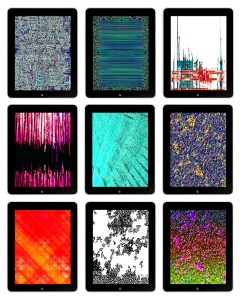
Comienza la temporada cultural en el Instituto Cervantes con una muestra de la obra del artista español Julián Aragoneses. La exposición abrirá sus puertas la semana que viene, el jueves 18 de septiembre, a las seis de la tarde.
Julián Aragoneses reside actualmente en Dublín. Es pintor, escultor y, con obras en papel, trabaja sobre diversos formatos.
Ha realizado exposiciones, individuales y colectivas en galerías como la Galería Vértice (Oviedo), Jean-Paul Perrier (Barcelona), Fernando Latorre (Madrid) o el Espacio Kubico (Madrid).
Desde su punto de vista, la evolución de la función del arte pone de manifiesto las contradicciones respecto a lo que nos debe aportar una obra de arte en la actualidad. La sociedad dedica escaso tiempo y pasión a la contemplación y entendimiento de las obras y es indiferente hacia el conocimiento en profundidad de las nuevas propuestas artísticas, las investigaciones científicas o cualquier otra faceta del saber humano. El resultado de todo ello es un desencuentro entre los creadores y el público y un consumo conformista de tecnología y arte efectistas.
Por otro lado, el ilustrado, el coleccionista, el amante del arte, ¿qué buscan?: ¿Inversión, confirmación de teorías, esnobismo, decoración, experiencias trascendentales, significado…?
¿Qué esperan del arte una sociedad y unos individuos que no buscan nada en sí mismos, esperando que todo venga de fuera sin esfuerzo? Las obras seleccionadas para esta exposición tratan de enfrentar al espectador con estas cuestiones: falsas expectativas, cuestionamiento de medios, ignorancia, tecnologías inertes, contradicciones, ironías…
Falsas expectativas / False expectations
Instituto Cervantes. Dublín
Desde el 18 de septiembre hasta el 9 de octubre
Horario: Lunes a jueves, de 2 a 7 de la tarde. Viernes y sábados, de 10 a 2 de la tarde.
Entrada gratuita.
Julian Aragoneses is a Spanish artist, who currently lives in Dublin. Painter, sculptor, he works on various formats.
He has organized exhibitions, individual and collective in galleries like the Corner Gallery (Oviedo), Jean-Paul Perrier (Barcelona), Fernando Latorre (Madrid) or Kubico Space (Madrid).
He believes that the evolution of the role of art reveals contradictions regarding what a work of art should offer us today. Society spends little time and passion in the contemplation and understanding of works. It is indifferent towards a deeper comprehension of new artistic proposals, scientific research or any other facet of human knowledge. The result is an unsatisfactory meeting between the creators and the public and a conformist consumption of sensationalist technology and art.
On the other hand, what is the learned, the collector, the art lover seeking? An investment, a confirmation of theories, snobbery, decoration, transcendental experiences, meaning…?
What does a society and individuals expect of art when they search for nothing themselves but expect everything to be given to them without effort? The works selected for this exhibit intend to confront the spectator with these questions: false expectations, questioning the media, ignorance, inert technologies, contradictions, ironies…
False expectations / Falsas expectativas
Instituto Cervantes. Dublin
From 18th September to 9th October
Opening times: Monday to Thursday, from 2pm to 7pm; Friday and Saturday, from 10am to 2pm.
Free Admission
Exhibition: In a faceless world. Paintings and sculptures by Amaya Bozal | Exposición: En un mundo sin rostro. Pinturas y esculturas de Amaya Bozal
Next Thursday, we open the exhibition In a faceless world with the paintings and scultures by Amaya Bozal. You can enjoy 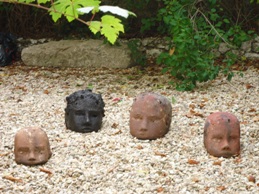
this exhibition until 17th October. The opening hours are Mon-Thu 2-7pm and Sat 10am-2pm.
Through the verses of Samuel Beckett, “what would I do without this world faceless incurious, where to be lasts but an instant”, Amaya Bozal brings to mind thoughts of fragility and violence, the starkness of the passage of time. A world wherefaces don´t belong to real people, they are archetypes, childlike heads painted with earth and gold, moulded in clay like ancient funeral masks, like the remains of an ossuary; fragments of female bodies, earth consumed by fire; wax and clay flowers punctured with old nails. This reflection conveys a depersonalized world, where femininity is only saved by its historic connection with nature.
Amaya Bozal (1972, Madrid) takes something from her classical and archaelogical training, that is reflected in all of her work – a craft she has been developing for over 20 years. She has exhibited in some of the biggest galleries – Sen, Rayuela, Fernández Brasso, Marlborough, Paul Sharpe Contemporary Art – and has participated in ARCO, ArteBA, FIA, and ArtMiami. Her work is visible in the best public and private collections in Europe. Currently, she continues to work in her studio in the mountains near Madrid, using wind, fragments of fallen trees and ancient techniques like fired clay, gold leaf and wax.
El próximo jueves día 12 inauguramos una nueva exposición: En un mundo sin rostro, con las pinturas y esculturas de la artista Amaya Bozal. La exposición permanecerá abierta hasta el 17 de octubre. Las horas de visita son de lunes a jueves de 14: 00 a 19:00 y los sábados de 10:00 a 14:00.
A partir de los versos de Samuel Beckett, “que haría yo sin este mundo sin rostro, sin preguntas, donde ser no dura sino un instante”, Amaya Bozal plantea una reflexión sobre la fragilidad y la violencia, lo descarnado del paso del tiempo. Un mundo donde los rostros no pertenecen a personas concretas, son arquetipos, cabezas infantiles pintadas con tierra y oro, moldeadas en barro como las antiguas máscaras funerarias, como restos de un osario; fragmentos de cuerpos femeninos, tierra devorada por el fuego; flores de cera y barro atravesadas por clavos antiguos. Todauna reflexión sobre un mundo despersonalizado, donde la feminidad sólo se salva en su comunión ancestral con la naturaleza.
Amaya Bozal (1972, Madrid) procede de formación clásica y arqueológica, algo que se trasluce en toda su obra, que viene desarrollando desde hace más de veinte años. Ha expuesto en las mejores galerías, Sen, Rayuela, Fernández Brasso, Marlborough, Paul Sharpe Contemporary Art y ha participado en ARCO, ArteBA, FIA, ArtMiami. Su obra está presente enlas mejores colecciones públicas y privadas de Europa. Actualmente, continúa trabajando en su estudio de la sierra de Madrid, utilizando el viento, fragmentos de árboles caídos y antiguas técnicas como la tierra chamotada, pan de oro o encáustica.
Exhibition | Exposición: José Guadalupe Posada. 100 years
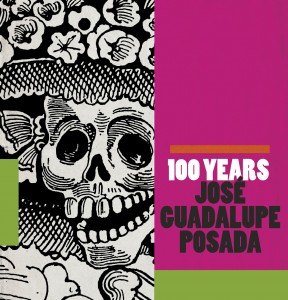 We invite you to enjoy today the official opening of a new exhibition organized by the Embassy of Mexico in Ireland: José Guadalupe Posada. 100 years. The event will be today at 7pm in the Exhibition Room. You can enjoy this fantastic work until July 4th.
We invite you to enjoy today the official opening of a new exhibition organized by the Embassy of Mexico in Ireland: José Guadalupe Posada. 100 years. The event will be today at 7pm in the Exhibition Room. You can enjoy this fantastic work until July 4th.
José Guadalupe Posada (1852-1913) is one of Mexico’s maximum exponents in universal plastic. His work has positioned itself in the collective imagination as synonymous with Mexican culture. It is just enough to mention one of his masterworks, the Calavera Catrina, as the benchmark of the ancestral celebration of the Day of the Dead, recognized and admired internationally.
A hundred years after the death of Posada, the exhibition covers the last decade of the Nineteenth Century and the first of the Twentieth, a period in which Posada consolidated what history set out as theorigin of Mexican popular graphic, and influenced decisively in various forms of art that resulted in the so-called nationalist movement, just after the Mexican Revolution.
This exhibition features over one hundred original pieces grouped into three themes: Daily Life, Disasters and Calaveras. The exhibition, presented in Dublin by the Embassy of Mexico in Ireland and the Cervantes Institute in collaboration with the Government of Aguascalientes, has been integrated by the Mexican National Institute of Fine Arts (INBA), the National Council for Culture and the Arts (CONACULTA), the Cultural Institute of Aguascalientes, México (ICA) and the José Guadalupe Posada Museum.
Opening hours: Mon-Thu: 3-7pm, Sat: 10am-2pm
Hoy estás invitado a asistir a la inauguración oficial de nuestra nueva exposición: José Guadalupe Posada. Cien años, organizada por la Embajada de México en Irlanda. Te esperamos hoy a las 19:00 en la Sala de Exposiciones. Tendrás la oportunidad de disfrutar de este fantástico trabajo hasta el 4 de julio.
José Guadalupe Posada (Aguascalientes, México, 1852 – Ciudad de México, 1913) en su época fue un modesto artesano ilustrador de impresos. Con el paso de los años su aportación resultó tan significativa que actualmente es el artista que mayor influencia tiene en la mayoría de los grabadores mexicanos del siglo XX. La vigencia de su obra continúa hasta nuestros días en el arte popular y seguramente su legado permanecerá por muchos años como ejemplo para artistas y diseñadores gráficos. Buena parte de sus creaciones se han convertido en iconos de la cultura mexicana. A nivel internacional cualquiera de sus estampas representa orgullosamente la identidad del pueblo mexicano.
Horario: Lunes a jueves de 15:00-19:00, Sabado: 10:00-14:00
Frida Kahlo: Amor, dolor, pasión y canción / Love, pain, passion… and songs.
 “Frida Kahlo…Amor, Dolor, Pasión y Canción” es un espectáculo biográfico musical mexicano que tiene como tema central la vida de la gran pintora Frida Kahlo.
“Frida Kahlo…Amor, Dolor, Pasión y Canción” es un espectáculo biográfico musical mexicano que tiene como tema central la vida de la gran pintora Frida Kahlo.
“Frida Kahlo…Love, Pain, Passion and Songs” is a biographical Mexican musical show. This artistic work has as main subject the life of the great painter Frida Kahlo.
Hoy / Today, 15/09/2011, Instituto Cervantes Dublin
Exposición / Exhibition: Paisajes bucólicos “Carlanga”
 Por primera vez en Irlanda, el Instituto Cervantes Dublín, junto a la Embajada de Chile, tiene el placer de invitarles a disfrutar del trabajo más reciente del destacado pintor chileno Carlos Araya Vargas, “Carlanga”, con su propuesta “Paisajes Bucólicos”, compuesta por 10 trabajos en gran formato, en óleo sobre tela.
Por primera vez en Irlanda, el Instituto Cervantes Dublín, junto a la Embajada de Chile, tiene el placer de invitarles a disfrutar del trabajo más reciente del destacado pintor chileno Carlos Araya Vargas, “Carlanga”, con su propuesta “Paisajes Bucólicos”, compuesta por 10 trabajos en gran formato, en óleo sobre tela.
Formado en la Escuela de Artes de la Universidad de Chile y residente hace más de 20 años en París, Carlanga ha tenido una larga trayectoria como artista plástico con distintos reconocimientos en Chile, Francia y en otros países. Asimismo, este pintor chileno ha participado en diversas iniciativas sociales vinculadas con el arte en París y constituye uno de los artistas más relevantes de la pintura contemporánea chilena de los últimos 20 años.
http://www.carlosaraya.com/es/biographie/index.php
Desde el 12 de mayo, a las 6 de la tarde, hasta el 11 de junio de 2011, en el Instituto Cervantes de Dublín
For the first time in Ireland, the Instituto Cervantes Dublin, together with the Embassy of Chile, are pleased to invite you to enjoy the most recent work from the renowned Chilean artist Carlos Araya Vargas – “Carlanga”, with his collection “Bucolic Landscapes” made up of 10 oil canvasses in big format.
He trained in the School of Fine Arts at the University of Chile, and has resided for over 20 years in Paris. Carlanga has had a long career as a graphic artist and has won prestigious awards in Chile, France and other countries. In addition, this artist is one of the most relevant representatives of the Chilean current contemporary scene of the last 20 years. .
The opening of this Individual Showcase will take place on Thursday, May 12th at 18:00 in the Exhibition Room, Instituto Cervantes, and has been possible thanks to the support of the Cultural Affairs Department of the Chilean Ministry of Foreign Affairs.
http://www.carlosaraya.com/es/biographie/index.php
From the 12th of May 18:00 until the 11th of June 2011. Instituto Cervantes Dublin
Two Worlds: an exhibition of new works by Jordi Forniés
Jordi Forniés, born in Huesca in 1971 is a Catalan artist based in Dublin (Ireland).
A chemist by training, Jordi knows a thing or two about pigments and paint.
His experience in this area combined with a very strong interest in the mineral world has lead Jordi to reinvent or re-interpret the complex yet beautiful landscapes within and without, mixing traditional and cutting edge design techniques.
Sculpting external material into the canvas before blending colours as time would in rock formations, the artist invites us on a journey through the inner self, exploring the geology of the mind, the meandering of distant memories, the erosion of emotions, the passing of love.
Opening on Wednesday November 17 at 7 pm
Smock Alley Theatre.
Girls School.
Essex Street West.
Temple Bar. Dublin 8






